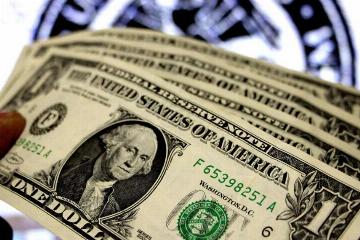Dollar's Surge Forces Global Currency Defenses
Advertisements
As the dominance of the US dollar strengthens, emerging markets around the globe are finding themselves in a precarious position, facing economic pressures that are pushing their currencies to alarming lowsFrom Brazil to South Korea, central banks are taking measures to shield their economies from the repercussions of a soaring dollar, which has left many currencies struggling against the greenbackThe financial landscape is marked by volatility as governments scramble to restore confidence among investors and stabilize their respective currencies.
In Indonesia, the situation is particularly direThe Indonesian rupiah has plummeted to its lowest level in four months against the US dollarIn response to these developments, the Bank of Indonesia has pledged to take assertive action if the currency experiences excessive fluctuations in the marketThis commitment signals the central bank's determination to uphold monetary stability in an effort to reassure investors that the economy remains solid.
Meanwhile, in India, the Indian rupee hit an all-time low against the US dollar, prompting traders to speculate that the Reserve Bank of India may be discreetly selling off its dollar reserves to curb further depreciation
Advertisements
Such intervention is a common strategy employed by central banks to stabilize their currencies through the foreign exchange market, reflecting the gravity of the situation.
In Northeast Asia, the Japanese yen has been in freefall, witnessing a significant decline that surpasses 300 points within a single dayThis dramatic plunge has not gone unnoticed by the Japanese government, with officials from the Ministry of Finance voicing their concerns and announcing a commitment to take appropriate actions to mitigate excessive volatilityAlthough the specific measures to be adopted remain unclear, the stern response indicates that the government is closely monitoring the yen's exchange rate.
South Korea is also feeling the weight of the dollar's strength, as the won sinks to its lowest level in fifteen yearsIn light of this crisis, South Korean financial authorities have rolled out measures aimed at easing foreign exchange regulations to enhance market liquidity and attract capital inflows
Advertisements
Additionally, the National Pension Service of Korea has stated that it will implement foreign exchange strategy hedging, taking a multi-faceted approach to stabilize the won.
As we turn our attention to South America, Brazil faces similar struggles with the Brazilian real continuing to devalue against the US dollarFaced with the possibility of economic turmoil, the Central Bank of Brazil has resorted to conducting several immediate dollar auction operations in a bid to bolster the currency through market mechanismsSuch actions illustrate the ongoing efforts of these nations to safeguard their economic stability amidst external pressures.
Philippine central bank governor Eli Remolona has emphasized that they are closely monitoring the depreciation of the peso and have intensified market interventionsIn just the past week, the Brazilian central bank has expended nearly $14 billion to support the real, while Indonesia's central bank has promised to "boldly" protect the rupiah and bolster market confidence.
The ramifications of a strong dollar have not only triggered currency depreciation but have also compounded inflationary pressures for emerging markets, leading to a rise in repayment costs for foreign debts
Advertisements
The dynamic and interlinked nature of today's global economy means that any ripple effects from a strong dollar can quickly escalate and impact these economies.
Commenting on the struggle against the resilient dollar, Singapore's Oversea-Chinese Banking Corporation currency strategist Christopher Wong noted, "It is challenging to confront a strong dollarAny interventions made in this environment will merely slow down the pace of currency depreciation." Despite this, Wong suggested that central banks might still need to employ a mix of verbal and actual intervention techniques to mitigate volatility.
Since late September, the MSCI Emerging Markets Currency Index has experienced a 3.3% decline, marking the largest quarterly drop in two yearsThis troubling trend has emerged in the wake of the Federal Reserve's signals indicating fewer interest rate cuts could be expected in the coming year while highlighting an escalating concern regarding inflationary pressures.
Within this context, decision-makers in developing markets are taking decisive steps as they anticipate continued strength of the dollar
- Promoting Safe and Orderly Development of Nuclear Energy
- Elevating the Full Chain of China's Automotive Industry
- Nvidia Loses $240B in Market Value Overnight
- U.S. JOLTS Job Openings Exceed Expectations
- Why the U.S. Decline Hurts Japan and South Korea?
South Korea recently announced that it would relax the cap on foreign exchange forward positions held by banks by 50%, a move aimed at addressing supply-demand imbalances in the domestic currency market while facilitating capital inflowAdditionally, the People's Bank of China is continuing to bolster the yuan's daily reference rate, consistently setting it stronger than market expectations—an indication of its commitment to currency stability.
However, the fight against the strengthening dollar is not without its costs; monetary authorities find themselves compelled to deploy foreign exchange reserves to defend their currenciesAlan Lau, a foreign exchange strategist at Malayan Banking Berhad in Singapore, remarked that the Federal Reserve's less dovish stance has been a key driver of the dollar's ascent, coupled with reduced liquidity expected in December, which could exacerbate market volatility.
Lau further noted that over the coming weeks, central banks worldwide would likely persist in their efforts to dampen currency fluctuations, proactively working to avert extremes in volatility

Leave A Reply